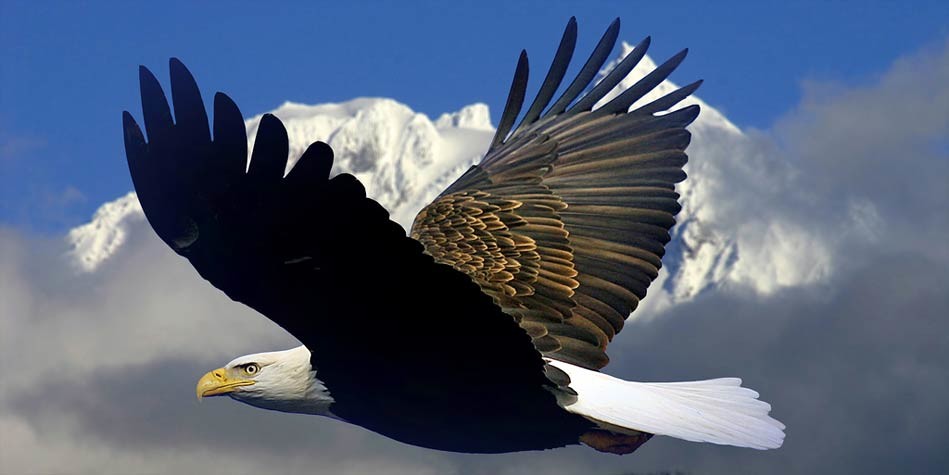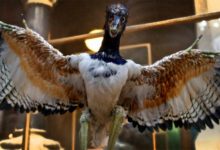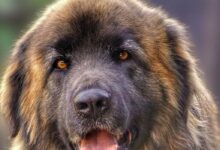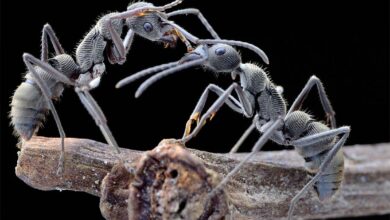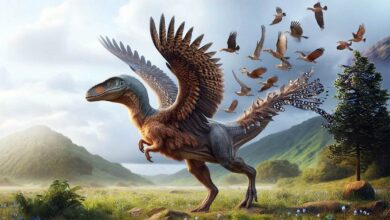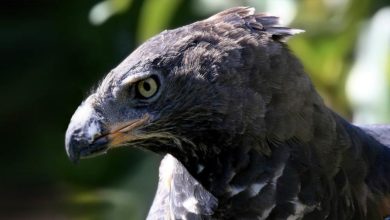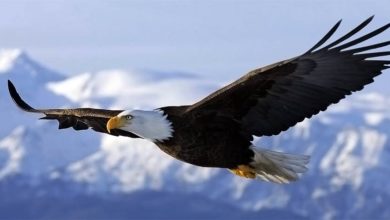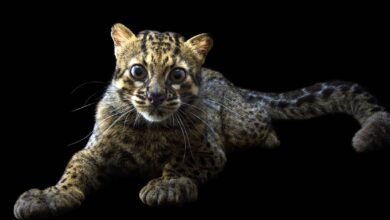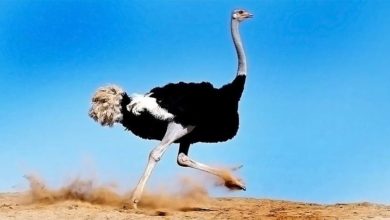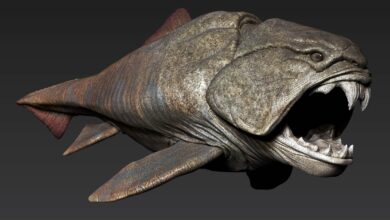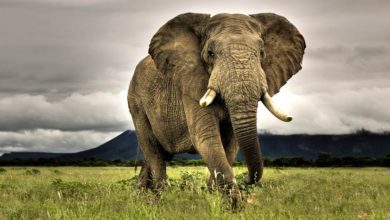Bald eagle (Haliaeetus leucocephalus)
It is pictured on the obverse of the Great Seal of the United States. In the late XX century, it was on the edge of extinction, yet it performed a true rebirth, like Phoenix from the ashes. Mighty, strong and dangerous. The bald eagle is the king and ‘gangster’ among the North American birds.
Classification
- Class: Aves
- Order: Accipitriformes
- Family: Accipitridae
- Genus: Haliaeetus
- Species: Haliaeetus leucocephalus
There are two recognized bald eagle subspecies:
- Haliaeetus leucocephalus leucocephalus
- Haliaeetus leucocephalus washingtoniensis
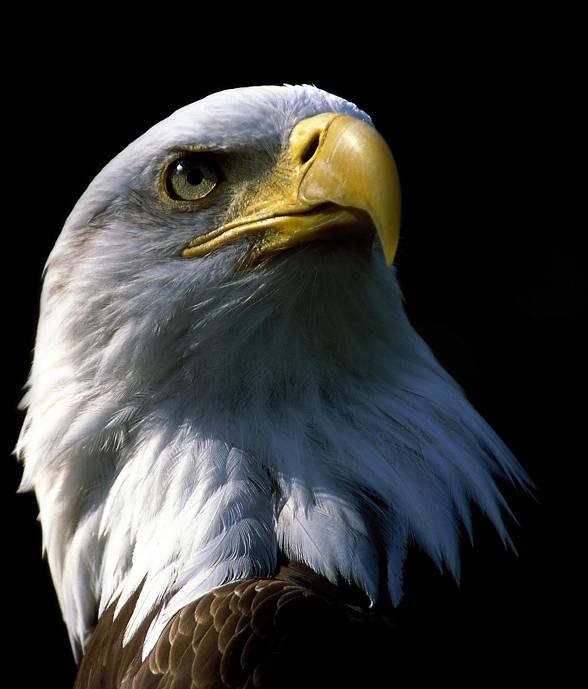
Name
Bald eagle – its name is related to adult eagles’ distinctive head appearance. The word bald is derived from the Old English balled, which meant ‘shiny or glossy white’. The scientific terminology Haliaeetus means ‘marine eagle’ (from the Greek haliaetos), while leucocephalus indicate the whiteness of the head – from the Greek λευκός : leukos (‘white’, ‘bright’, ‘brilliant’, ‘shiny’) and κεφαλή : kephale (‘head’).
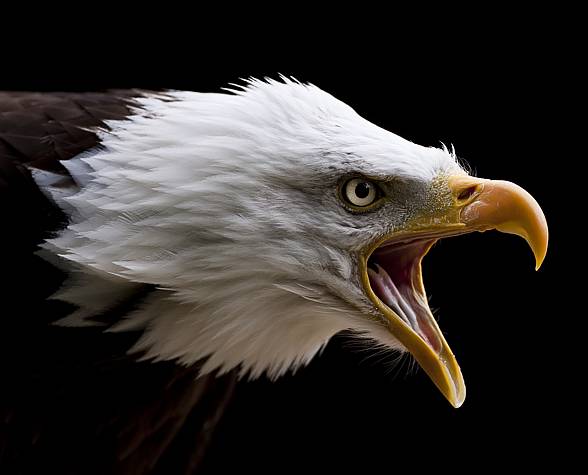
Areas of occurrence
Few Europeans will be able to observe the bald eagle in its natural habitat, as it only lives on the North American continent, including all 48 continental states of the USA (excluding Hawaii), Canada, Alaska and Mexico.
It is easiest to observe by water reservoirs and ocean waters. It is not bothered even by polluted rivers. It chooses aged coniferous forests and wildlands for its habitat, yet always in close proximity to the water. Northern populations migrate, while southern populations may spend a whole year in one given territory.
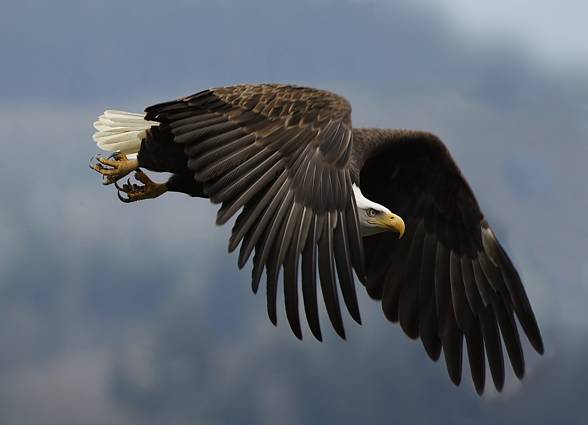
Characteristics
Appearance
Strong and vibrant colors are the bald eagle’s distinctive features: the torso, leg and wing feathers are dark brown, while its head and tail shine with a bright light color. Legs and crooked beak are yellow. There is no sexual dimorphism in terms of plumage, yet there is a significant size disparity – females are much larger than males. Toes are short, but equipped with long, sharp talons. Well developed back claws act like daggers, piercing through strategic areas on the victim’s body, while the front toes hold the prey firmly.
A young eagle is easily distinguished from an adult, for its feathering is almost 100% dark brown, only with occasional white spots. The feather color changes after the fifth year of age, when the eagle becomes sexually mature.

Golden eagle vs. bald eagle – differences
During the flight, the wings are a little lowered- this feature distinguishes the young bald eagle from a golden eagle (Aquila chrysaetos), which flies with its wings slightly lifted. Furthermore, an adolescent bald eagle has a larger beak and legs completely covered with feathers.
Dietary habits
The bald eagle is an opportunistic carnivore, which means it hunts for whatever is the easiest catch at a given moment. Its diet consists of fish, mostly, but it also eats mammals, birds and other small animals. Depending on the inhabited region it prefers different fish species, e.g. salmons, herrings, trout, eels and catfish. Fish living in the benthic zone, close to the sea bottom are consumed when they die, their carcasses floating on the water surface.
Its favorite mammals are (among others) squirrels, raccoons, beavers, small deer, muskrats, gophers, rabbits and hares.
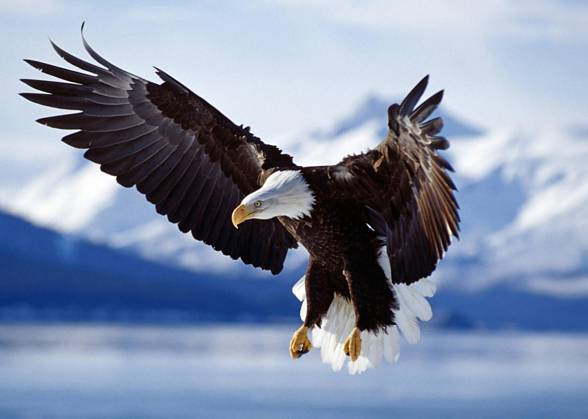
Hunting strategy
It hunts for fish – its favorite delight – performing a dive right above the water surface, subsequently pulling the fish out of the water with its strong claws. The prey is consumed while held with one leg, torn apart with claws of the other leg. This bird can fly carrying a very heavy catch – even a fish of the same weight as itself.
It is also estimated that the force generated by the clench of bald eagle’s claws is about 10 times as large as a force of a human hand.
Sometimes bravado does not pay, for every now and then a bald eagle carrying a heavy (heavier than itself) prey is pulled down into the water and despite its swimming skills, it drowns or dies of hypothermia.
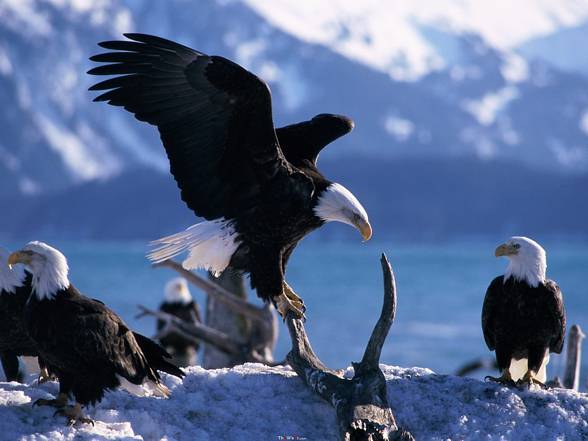
An apex predator
The American bald eagle has no equal predators – it is almost always a winner in the fight for food (whether alive or dead). It is higher in the hierarchy than a coyote, fox, seagull, or even a vulture. When compared to a golden eagle, the bald eagle turns out to be more ‘lazy’, as carrion is also in its menu (similarly to condors’), as well as food stolen from other predators. It was previously believed that these habits were closer to the golden eagle’s style, however, observations have shown the opposite.
Both species are similarly sized, have a similar temper and aggressive inclinations, so the interspecies duels of those aerial titans are not uncommon. A result of such a fight is never predictable due to the high level of interspecies similarity.
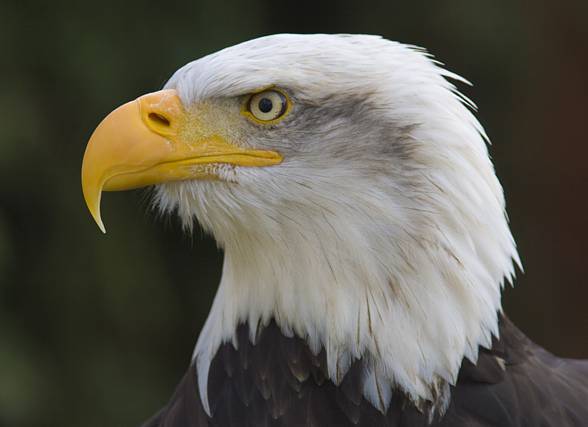
Behavior, habits
It glides, ascending in the thermal columns, which help the eagle gain speed. Owing to them it can fly with a velocity of 56 – 70 km/h (35–43 mph). When looking for prey above water, it diminishes its speed to about 48 km/h (30 mph). The diving speed, due to which the eagle is capable of catching the victim instantly, ranges from 120 to 160 km/h (75–99 mph), yet it rarely performs vertical dives.
This bird is a partially migrating species, depending on the inhabited area. If on its territory it has permanent access to water, it stays there all year long, but if the water freezes during winter, which drastically limits the food access as well, the bald eagle moves to the southern areas of the continent or to coastal regions.
During migrations, it moves during the day between 8:00 and 18:00 local time, when the air is heated by sunlight, which boosts the air currents and increases their speed.
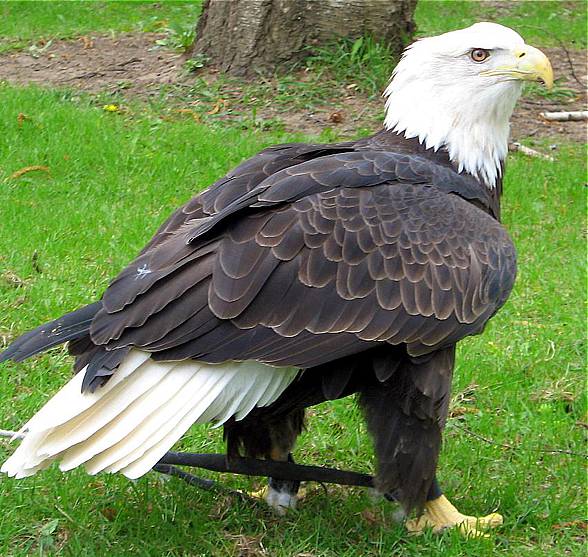
Breeding
In most cases, the bald eagle makes lifetime relationship bonds. If one of the partners dies or disappears, the abandoned bird finds a new life partner. Pairs which repeatedly tried to procreate without success – split up and every bird searches for a new partner.
The mating process is highly complicated: it involves spectacular aerial demonstrations: chases, corkscrews, diving flights, freefalling ending only a few centimeters above ground, as well as various sounds.
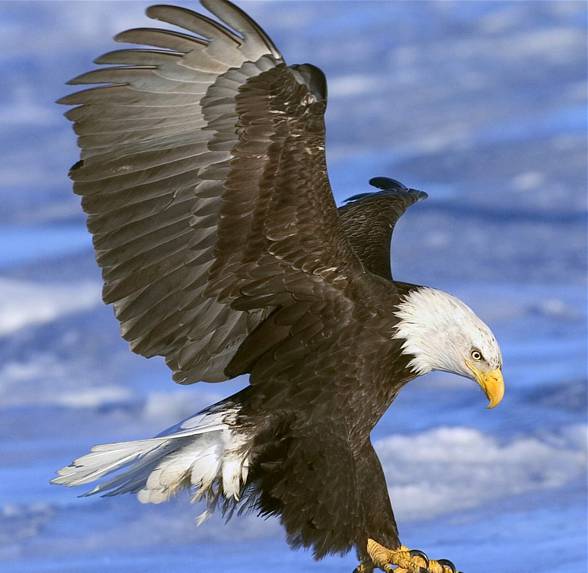
The largest nests in the world
A pair reinforces an old nest or builds a new one in the middle of February, while most birds of prey do not begin ‘renovating’ their nests until April or May.
Bald eagles’ nests are the largest structures of this type among the North American animals, also being the largest arboreal structures.
One nest endures many years and a pair returns to it every year to reinforce the structure. Bald eagles use one nest for about 5 years, the main reason for leaving the nest being the storm-caused damage or breaking the nest under the tree branches’ pressure. Normally built in the wide tree canopies, nests of bald eagles inhabiting areas without forests are built on the ground (e.g. on the Alaskan island Amchitka). A female lays 1-3 eggs in the second half of February.
The largest bald eagle’s nests are up to 6 meters (20 ft) deep, 2.9 meters (9.5 ft) wide and weigh even 3000 kg (6600 lb).

Offspring
The incubation period lasts from March to early May. Eggs are incubated by both male and female, though the future mother cares for them more often. During the first 2-3 weeks of incubation, the parent almost never leaves the nest, at all. After 5-6 weeks, it leaves the nest more regularly, spending more time beside it.
Chicks are hatched between the half of April and the first days of May, the baby eagles grow feathers on the turn of June and July. After about 8 weeks the young bald eagle is strong enough to begin learning to fly.
Between the 8 and 14 weeks of life, the bald eagle becomes independent, but still remains in close proximity to the home nest. The first flight and distancing itself from ‘home’ take place after 8 weeks from growing the feathers. It will spend 4 years roaming in search for food, after which it reaches sexual maturity and will be able to procreate.
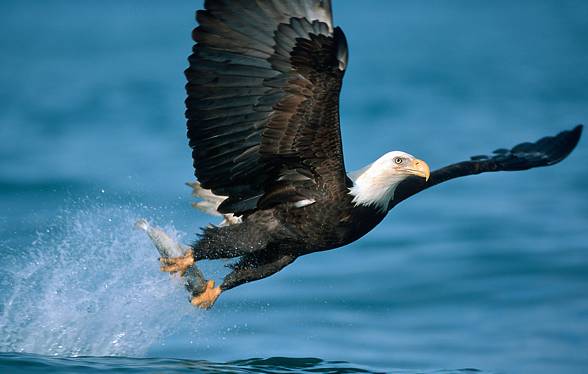
Swan hunt…
The bald eagle can attack even as large a bird like a swan. You can see brief documentation of such a situation from 2009 below. Luckily for the swan, this encounter ended without any harm. The swan descended into the lake and swam away. The eagle only stared at it helplessly…
However such events take place extremely seldom, even the more catching it on pictures deserves recognition for Kelly Munday, though a coincidence was likely a contributing factor in that matter.
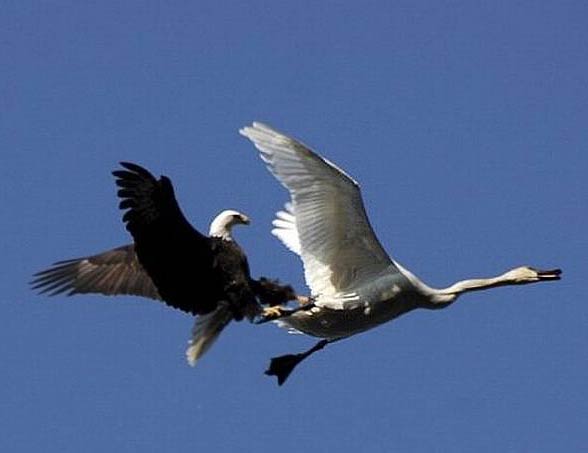
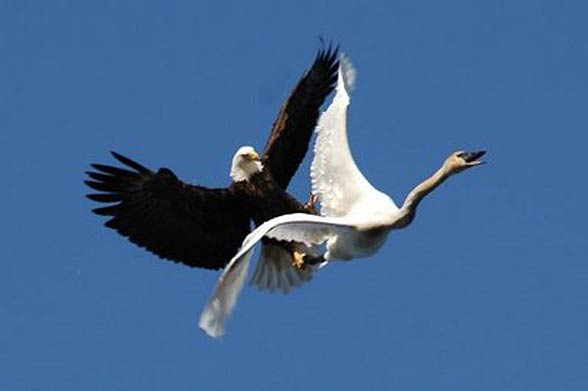
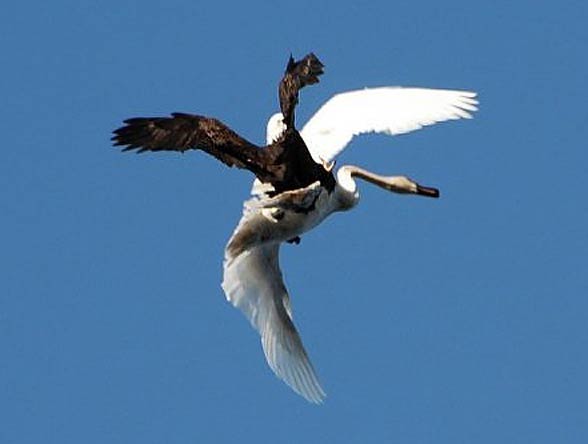
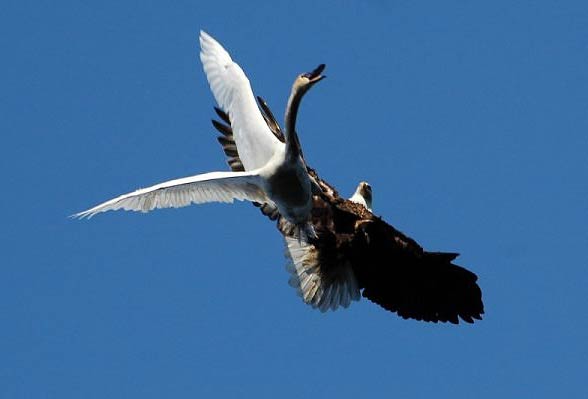
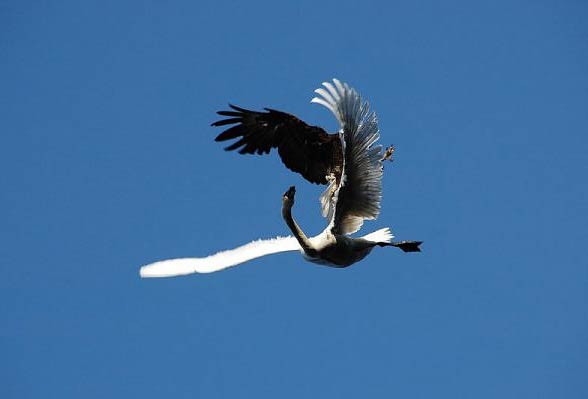
Detailed characteristics / size
Bald eagle (Haliaeetus leucocephalus)
- Body length: 70 – 102 cm (28 – 40 in)
- Mass: from 3 to 6.3 kg, or even 7.5 kg
- Females: 5.6 kg on average (12 lb)
- males: around 4.1 kg (9.0 lb)
- Wingspan: 168 -244 cm (5.5 – 8 ft), most often 180-230 cm (5.9 and 7.5 ft)
- Lifespan:
- up to 20 years in the wild (oldest recorded – 28 years)
- up to 50 years in captivity
- Speed:
- flight: 56–70 km/h (35–43 mph)
- dive speed: 120–160 km/h (75–99 mph)
- Females are about 25 % larger than males.
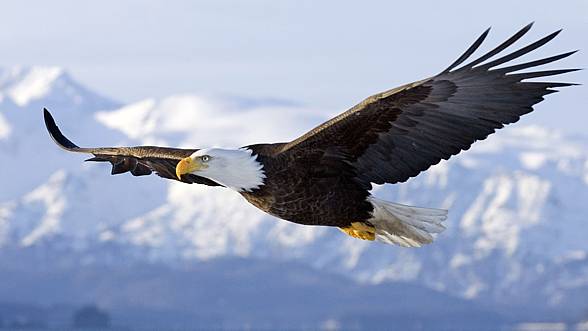
Bald eagle – interesting facts
- The American bald eagle is the national bird symbol of the United States of America. It became a symbol in 1792. The bald eagle was chosen because of its majestic, beauty, strength, and because it’s native to North America.
- Females are 25% larger than males
- It is considered one of the largest North American birds of prey. California condor (Gymnogyps californianus) is the only bigger bird, reaching a wingspan of even 3 m (9.8 ft), with a body length of 140 cm (4.6 ft).
- Its diet consists of about 50% fish. For eagles living in the Columbia River estuary in the state of Oregon fish may be even 90% of their menu.
- Thanks to its powerful talons bald eagle can fly with prey weighing almost 7 kg, or even heavier.
- When confronted with another scavenger e.g. a seagull or vulture, the bald eagle attacks trying to make to opponent throw up the food.
- Despite a huge rivalry between the bald eagle and golden eagle, during winter in New Jersey, these two birds may be observed hunting alongside each other without conflict.
- A bald eagle’s nest may be 4 m (13 ft) deep, 2.5 m (8 ft) in diameter and weigh 1 ton (2200 lb). The largest nest found in Florida was 6 m (20 ft) deep, 2.9 m (9.5 ft) in diameter and weighed 3 tons (6600 lb).
- One pair occupied the nest throughout 34 years.
- The first year of the bald eagle’s life is survived only by half of the young eagles.
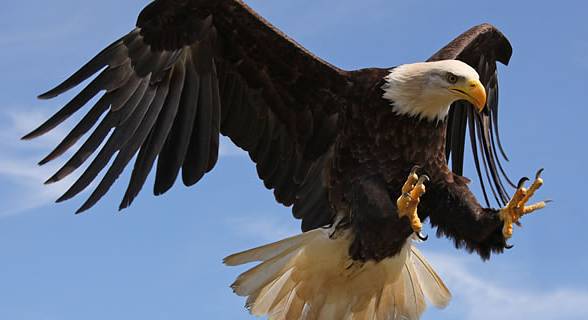
Recommended
- Animals records
- Largest eagles Top10
- Largest birds of prey
- Haast’s eagle
- Steller’s sea eagle
- Philippine eagle
- Crowned eagle
- Fastest animals – Top 10
- Fastest birds – Top 10
- Most venomous snakes – Top 10
- Largest sharks Top 10
- Heaviest land animals
- Largest crocodiles Top 10
- Largest whales TOP 10
- Longest snakes Top 10
- Highest (Top) flying bird – Top 10
- Largest and heaviest birds
- Largest turtles TOP 10

